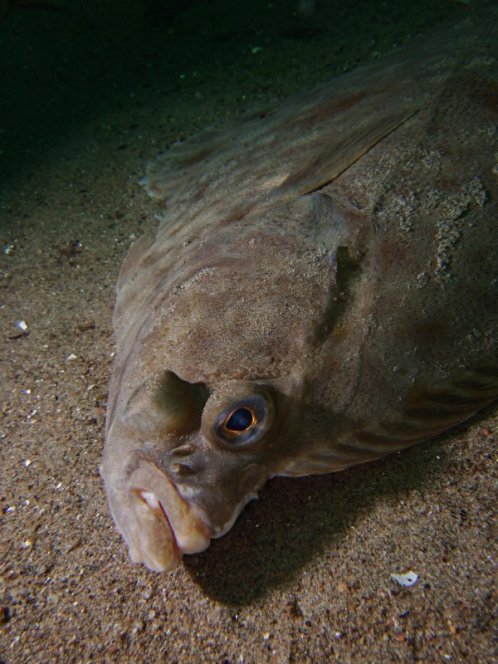Hippoglossus stenolepis
The Pacific halibut is one of the largest species of flatfish found in the Pacific Ocean. Due to its impressive size, its Latin name has been incorrectly interpreted by some to mean, “Hippo of the Sea.” In actuality, hippos and glossa are Greek words meaning “horse” and “tongue”, respectively. Steno and lepis are Greek stems denoting “narrow” and “scale”. Its Latin name refers to the halibut’s narrow scales shaped like a horse’s tongue. The common English name, halibut, is derived from the Middle English term, “Hally butte” (hally meaning holy and butte denoting flat). In the late nineteenth and early twentieth century, this genus of fish, particularly from the Atlantic, was harvested and served on holy days, or holidays, as a special meal. The Atlantic halibut closely resembles the Pacific halibut; hence the regional portion of their common name indicates only minute differences, such as the slightly narrower scale and differing pectoral fin length of the Pacific halibut. The Russian scientist, Schmitt, is accredited for these observances and the new species identification of Hippoglossus stenolepis in 1904.
Still interested? See how the halibut is classified!
